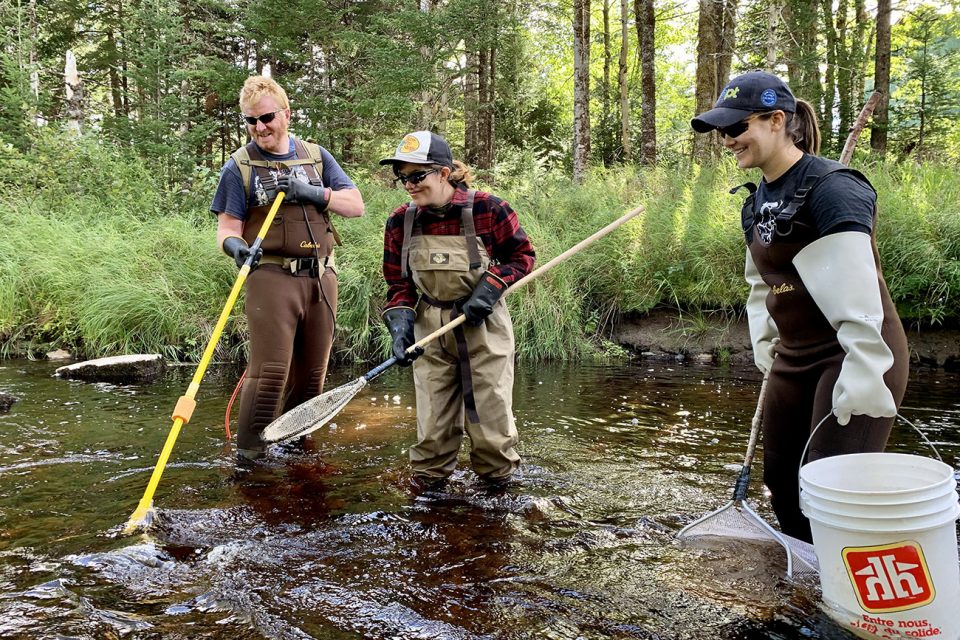Projets affichés
/ Nouvelle-Écosse / 2020
Élaboration d’un modèle pour la restauration du stress acide des cours d’eau régionaux sur la rivière…

La Nouvelle-Écosse est particulièrement touchée par les pluies acides. En raison d’une géologie unique, de nombreux cours d’eau à saumon de la province restent gravement endommagés alors que le problème a été résolu dans la plupart des autres endroits vulnérables en Amérique du Nord et en Europe. Le problème est principalement l’aluminium d’origine naturelle qui est libéré dans les rivières par l’acidité. L’aluminium peut s’accumuler à la surface des branchies d’un poisson, entraînant un dysfonctionnement respiratoire et même la mort.
Depuis 2005, les fonds ont d’abord été collectés principalement de manière privée pour imiter les projets de chaulage réussis appliqués en Norvège. Le projet d’atténuation de l’acidité de la rivière West, dirigé par la Nova Scotia Salmon Association et financé en partie par la FCSA pour un montant de 20 460 $ en 2020, a permis d’atténuer les effets des pluies acides et, par conséquent, d’augmenter la production annuelle de saumoneaux sauvages de l’Atlantique de plus de 300 pour cent. La rivière West a été développée comme modèle pour la restauration des rivières soumises à un stress acide dans la région.
Les deux doseurs de chaux ont bien fonctionné pendant la saison et les basses eaux ont réduit le budget de chaulage. Le chaulage par hélicoptère des bassins versants (débuté avec succès en Norvège) a été ajouté au projet et appliqué pour la première fois à la rivière St Mary à proximité.
Le succès est mesuré par la surveillance à long terme des densités de juvéniles avec la pêche électrique à six sites de référence dans le bassin versant.
Récemment, la NSSA a obtenu un financement et a commencé à planifier des projets similaires sur sept autres bassins versants prioritaires. La NSSA a besoin de données de surveillance justifiables et scientifiquement fondées pour évaluer l’impact des activités de restauration. Ce projet appuiera un programme estival de pêche à l’électricité à grande échelle, la conception et l’essai d’un nouveau dénombrement de frayères de saumon à l’automne et des relevés à grande échelle de la chimie de l’eau.
